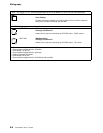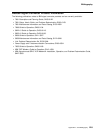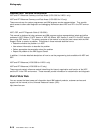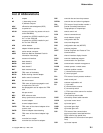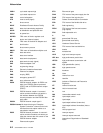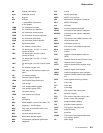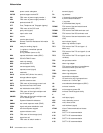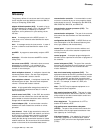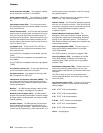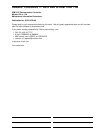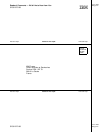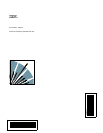
Glossary
Glossary
This glossary defines all new terms used in this manual.
It also includes terms and definitions from the
IBM Dic-
tionary of Computing,
GC20-1699.
adapter-initiated operation (AIO). A transfer of up to
256 bytes between an adapter (CA or LA) and the CCU
storage. The transfer is initiated by an IOH/IOHI
instruction, and is performed in cycle stealing via the
IOC bus.
alarm. A message sent to the MOSS console. In
case of an error a reference code identifies the nature
of the error.
alert. A message sent to the host console. In case of
an error a reference code identifies the nature of the
error.
autoBER. A program to automatically analyse a BER
file.
automaint. A function that uses autoBER to isolate
failing FRUs.
box event record (BER). Information about an event
detected by the controller. It is recorded on the
disk/diskette and can be displayed on the operator
console for event analysis.
block multiplexer channel. A multiplexer channel that
interleaves blocks of data. See also
byte multiplexer
channel
. Contrast with
selector channel
.
byte multiplexer channel. A multiplexer channel that
interleaves bytes of data. See also
block multiplexer
channel
. Contrast with
selector channel
.
cache. A high-speed buffer storage that contains fre-
quently accessed instructions and data; it is used to
reduce access time.
central control unit (CCU). In the 3745, the controller
hardware unit that contains the circuits and data flow
paths needed to execute instructions and to control its
storage and the attached adapters.
channel adapter (CA). A communication controller
hardware unit used to attach the controller to a host
processor.
clear channel. Mode of data transmission where the
data passes through the DCE and network, and arrives
at the receiving communication controller unchanged
from the data transmitted. The DCE or network can
modify the data during transmission because of certain
network restrictions, but must ensure the received data
stream is the same as the transmitted data stream.
communication controller. A communication control
unit that is controlled by one or more programs stored
and executed in the unit. Examples are the IBM 3705,
IBM 3725/3726, IBM 3720, and IBM 3745.
communication scanner processor (CSP). The
processor of a scanner.
communication subsystem. The part of the controller
that controls the data transfers over the transmission
interface.
configuration data file (CDF). A MOSS file that con-
tains a description of all the hardware features (pres-
ence, type, address, and characteristics).
control panel. A panel that contains switches and
indicators for the use of the customer's operator and
service personnel.
control program. A computer program designed to
schedule and to supervise the execution of programs of
the controller.
control subsystem (CSS). The part of the controller
that stores and executes the control program, and moni-
tors the data transfers over the channel and trans-
mission interfaces.
data circuit-terminating equipment (DCE). The
equipment installed at the user's premises that provides
all the functions required to establish, maintain, and ter-
minate a connection, and the signal conversion and
coding between the data terminal equipment (DTE) and
the line. For example, a modem is a DCE (see
modem
.)
Note: The DCE may be separate equipment or an
integral part of other equipment.
data terminal equipment (DTE). That part of a data
station that serves as a data source, data link, or both,
and provides for the data communication control func-
tion according to protocols.
direct attachment. The attachment of a DTE to
another DTE without a DCE.
high-performance transmission subsystem
(HPTSS). The part of the controller that controls the
data transfers over the high-speed transmission inter-
face (speed up to 2 million bps).
high-speed scanner. Line adapter for lines up to 2
million bps, composed of a communication scanner
processor (CSP) and a front-end high-speed scanner
(FESH).
Copyright IBM Corp. 1989, 1997 X-7



